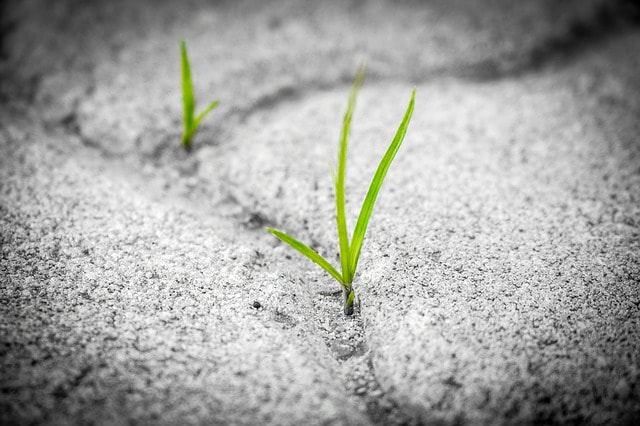|
Ragweed allergies affect 15-20% of the American population each year and are the major contributing factors in hayfever, but I bet if I asked you to pick it out of a weed line up, you'd have no clue who the guilty party was. Don't feel bad; I couldn't either. I assumed ragweed looked like tall grass maybe, with bright green blades. Never did I expect it to bloom small bright yellow flowers and I would of just as quickly mistook it for some field flowers. Before we get too far into the weeds, let's get a better understanding of the ragweed plant and what it actually looks like by watching the video below. What Is Ragweed?Ragweed is a plant that grows all over the United States, inside of cities, in concrete cracks and empty parking lots. Ragweed allergies contribute to allergic rhinitis and hay fever making millions of Americans sick from late July to October. But the plant continues to produce pollen all the way to the first freeze in many areas. SymptomsDr. Devi Nambudripad writes in his book "Say Goodbye To Illness" " Hay fever and rhinitis are both characterized by symptoms of watery discharge from the nose, eyes, and throat, loss of taste and smell, and other symptoms similar to those accompanying colds." You may have a tickle that makes you want to rub your nose all the time or feel like you have a ball of Nickelodeon slime in your chest. Ragweed in Urban AreasImagine with me for a moment that we're taking a trip to the museum in the city together. It's hot as we get into the car, and rows of ragweeds would speed past our side windows as we drove down the highway. Once we found our parking spot, we'd walk right past the stray weeds in all the cracks and barren spaces of the concrete jungle. The heat of the day and air pollution would create an ozone effect making it even harder for our lungs to process air. But ragweed can't allow air pollution to have all the fun; a study by the University of California/Los Angles School of Medicine sited even back in 1997 that "...this synergy between DEP (diesel exhaust pollution) and natural allergen exposure is suggested as a key feature in increasing allergen-induced respiratory allergic disease." Ragweed thrives from the dirtier air from the effects of climate change. There's nothing better than a hotter, more extended season to produce even more pollen spores, up to one billion grains per ragweed plant. A trip to the museum downtown would be toxic to our lungs, so what happens to the millions of people living in urban areas? Even if you're nowhere near taxi cabs, buses or 20 story buildings, ragweed still makes a vigorous effort to make sure you're sneezing into the fall. Ragweed pollen has been found 400 miles out to sea, and 2 miles high in the air. And just like your overly friendly neighbor, the more you're exposed to ragweed pollen, the sicker it makes you. Dr. Clifford Bassett in his book "The New Allergy Solution" writes, "One study showed that nasal symptoms at the end of pollen season were worse than at the start, though the level of ragweed pollen in the air is roughly equal." It's a pretty big problem, but there are a few ways we can make ragweed season a little easier. Foods To AvoidJust like other allergies, pan-allergens in food can trigger ragweed allergies. Pan-allergens are plant proteins that are found (in this case) in both ragweed and everyday foods you may consume. Here's a general list of foods you should avoid during ragweed allergy season. 1. Chamomile Tea Nothing like a soothing cup of tea, right? You'd be wrong. Chamomile is related to the ragweed plant, so maybe stay away from your favorite cup of tea at night for a while. 2. Melons Cantaloupe, Honeydew, and watermelon are all big no-nos. 3. Bananas 4. Tomatoes Tomatoes are a potent trigger for most seasonal allergies, not only ragweed. 5. Zucchini/Cucumber These seemingly flavorless veggies can often be tolerated once peeled or cooked. Oh Ya, What Happens If I Eat Them?Excellent question my inquisitive reader. If you're allergic to ragweed and choose to have a tomato and zucchini dinner with bananas and melon for dessert and a cup of chamomile to wash it all down, you're more than likely going to get pretty sick. Symptoms like itching and swelling of the throat, swelling of lips and tongue, stomach cramps, diarrhea, and even hives could befall you. If you're trying to get out of a horrible dinner date, eating these five foods would get you outta there pretty quick, although some symptoms can take several hours to take effect. If however, you have a dinner date you don't want to be snotting all over, try these tips to feel better faster. 1. Dr. Leo Galland swears by exercise, cold showers, and removing wheat from your diet to reverse the effects of hayfever from ragweed allergies. 2. Make sure you keep windows closed in the car, at home and work, and then use a HEPA air filter to capture the ragweed pollens before they get into your face. 3. Take a shower before bed to wash away pollen from your hair and body, keeping your sleeping area clean. 4. Since you're not drinking chamomile tea anymore, try turmeric tea instead. It's anti-inflammatory and a natural painkiller. 5. Leave your shoes outside. Don't track pollen into your house with your sneakers. Get some fluffy house shoes and have them waiting by the door when you come home. Ragweed loves pollution, traffic, and boiling heat. It can travel for hundreds of miles by the wind and find your nose. It's hardy and has probably been around long enough to have made dinosaurs sneeze. But you have some things ragweed doesn't. You have the information to fight back and now could even point out this lousy weed in a line-up. Way to go solider, you're one step closer to breathing easy!
For more information on how to prepare for allergy season, click HERE. To learn more about tips for eating with allergies, click HERE.
1 Comment
Cynthia Gidlof
9/10/2018 08:12:15 am
Great read.
Reply
Leave a Reply. |
Categories
All
Categories
All
Archives
April 2019
|


 RSS Feed
RSS Feed





